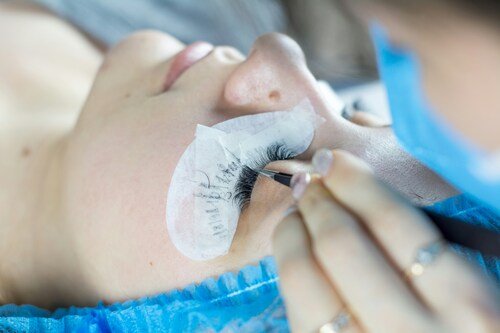You’re scrolling through social media, seeing those gorgeous before-and-after lash photos, and thinking “Maybe it’s time I tried Latisse.” But then that little voice whispers, “But is it actually safe?” This question keeps countless Westland residents awake at night, especially when Michigan’s brutal winters already have their eyes feeling sensitive and dry.
Here’s the straight talk: Professional latisse eyelash growth treatment in Westland offers stunning results, but like any medical treatment, it comes with considerations. Let’s cut through the noise and get you the real facts about Latisse safety—no sugar-coating, just what you need to know before taking the plunge.
You’ll discover the common side effects, who shouldn’t use it, and how Michigan’s harsh climate factors into your decision. Most importantly, you’ll understand why professional guidance matters more here in the Midwest than anywhere else.
The Real Talk on Latisse Safety
Latisse earned FDA approval back in 2008, making it the only FDA-approved eyelash growth serum on the market. The active ingredient, bimatoprost, originally treated glaucoma patients—doctors noticed their lashes grew dramatically as a side effect. Talk about a happy accident.
Clinical studies show Latisse is safe for most people, but here’s the thing: safe doesn’t mean side-effect free. Most side effects are mild and reversible, while serious complications affect only 3-4% of users. Those are pretty good odds, but you still need the full picture.
Living in Michigan adds another layer to consider. Anyone who’s walked outside during a February freeze knows how harsh our winters can be on your eyes. That dry winter air already challenges your eye comfort—adding Latisse to the mix requires extra awareness of how your eyes might react.
The bottom line? Latisse works, and it’s generally safe, but you’re not rolling the dice blindfolded. Knowledge is power, especially when it comes to your eyes.
Common Side Effects You Should Know About
Eye irritation and redness top the list, affecting 10-15% of users. This usually shows up as a mild burning sensation or pink-tinged eyes that improve within hours of application. In Westland, where winter air is already drying out your eyes, this irritation might feel more pronounced than it would for someone in, say, Florida.
Dry eyes present another common complaint. The preservative benzalkonium chloride can reduce tear production temporarily. Consider using artificial tears and running a humidifier during Michigan’s dry winter months—your eyes will thank you.
About 18% of users experience eyelid skin darkening, which sounds scarier than it usually is. This hyperpigmentation typically reverses after stopping treatment, but proper application technique prevents most cases. Apply only to the upper lash line, blot excess product immediately, and never reuse applicators.
Some people feel like something’s stuck in their eye, especially during the first few weeks. Others notice abnormal hair growth in unintended areas if the product spreads beyond the lash line. Eye infections can occur from improper use, but they’re easily prevented with good hygiene.
Here’s a pro tip for contact lens wearers: remove your contacts before applying Latisse and wait 15 minutes before reinserting them. This simple step prevents most irritation issues.
The Serious Stuff: Permanent Side Effects
Now for the side effect that makes people pause—and rightfully so. Latisse can cause permanent brown pigmentation of the iris, affecting 3-8% of users. This change is more noticeable in people with light-colored eyes and won’t reverse after stopping treatment.
Prostaglandin-associated periorbitopathy sounds intimidating, but it basically means fat loss around the orbital area, creating a sunken appearance around your eyes. Recent studies detected this in 100% of users when specifically looked for, though it’s often subtle. Think of it as the opposite of under-eye bags—your eyes might look more hollow.
Certain people should definitely avoid Latisse. Anyone under 18, pregnant or breastfeeding women, and those with uveitis, conjunctivitis, or macular edema need to steer clear. If you’re already using glaucoma medications, the combination could cause complications.
These permanent changes don’t happen overnight, but they’re worth serious consideration before starting treatment. Your eyes are irreplaceable—make sure you’re comfortable with all possible outcomes.
Michigan-Specific Considerations
Michigan winters create unique challenges for Latisse users. Dry indoor heating combined with frigid outdoor air already stresses your eyes. Cold wind and low humidity worsen dry eye symptoms, potentially amplifying Latisse side effects.
Consider seasonal timing for starting treatment. Spring might be ideal when your eyes aren’t already battling winter conditions. Summer gives you time to adjust before the harsh weather returns.
Local healthcare resources matter more than you might think. Having access to eye care specialists who understand Michigan’s climate challenges makes a difference. Clark Internal Medicine & Aesthetics offers consultations right here in Westland, where providers understand exactly what your eyes face during our notorious winters.
Don’t go it alone—especially when Michigan winters already challenge your eye health. Professional guidance helps you navigate potential complications before they become problems.
Making the Smart Choice for Your Eyes
A professional consultation matters more in Michigan than in milder climates. Your provider needs to assess your individual eye health, discuss seasonal concerns, and create a monitoring plan that accounts for weather-related factors.
Come prepared with questions about your eye health history. Mention any winter-related eye discomfort, dry eye issues, or sensitivity problems. Discuss whether starting treatment during milder months makes sense for your situation.
Latisse is generally safe but not risk-free. The key lies in individual assessment and professional guidance. Your Westland neighbors are getting beautiful results safely, but they’re doing it with expert support.
Consider scheduling your consultation during milder weather months when your eyes aren’t already stressed. Prepare questions about your specific eye health history and think about starting with a patch test to gauge your sensitivity.
Your eyes deserve the best care possible—especially when facing Michigan’s challenging climate conditions year-round.



